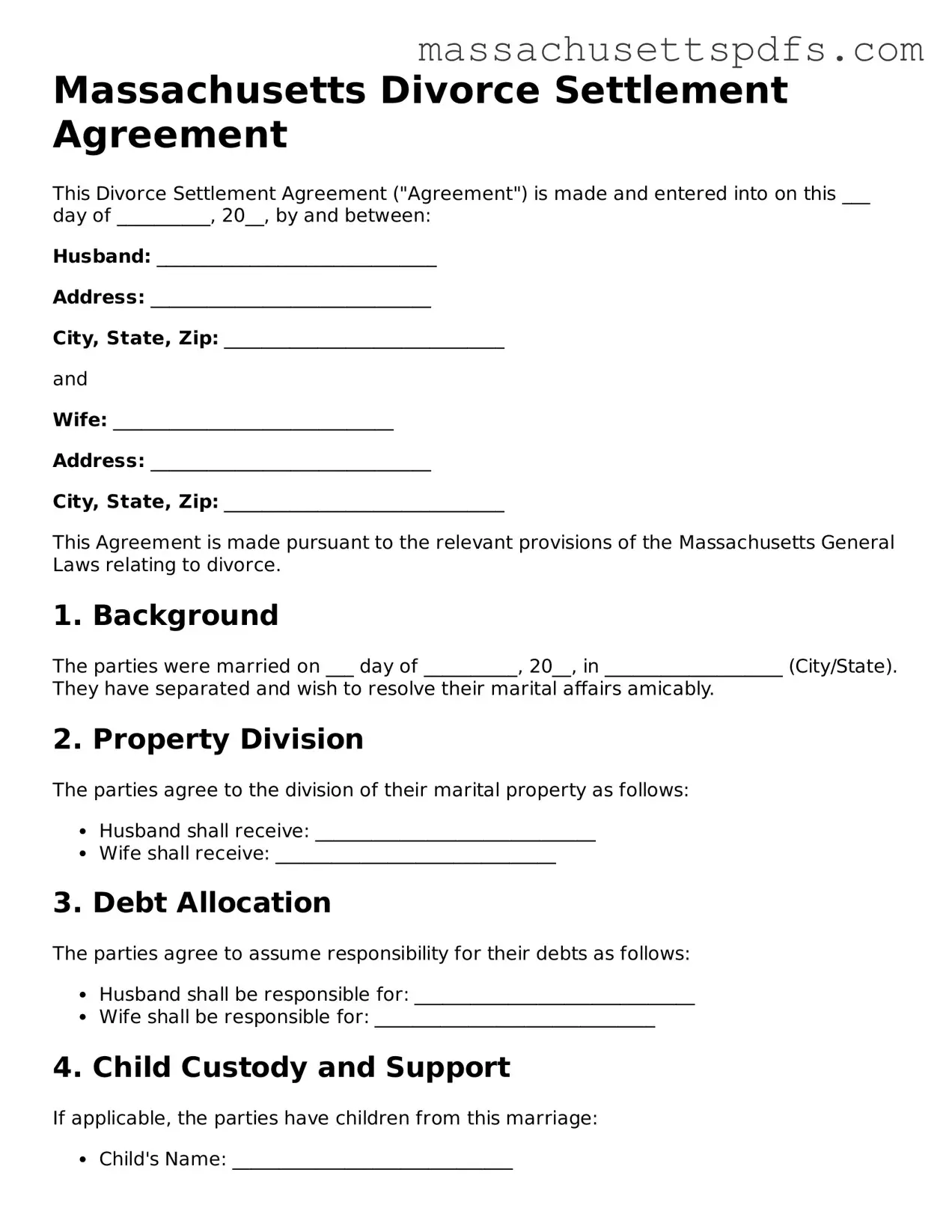Attorney-Approved Massachusetts Divorce Settlement Agreement Document
The Massachusetts Divorce Settlement Agreement form is a crucial document that outlines the terms of a divorce between two parties. This agreement covers various aspects such as property division, child custody, and support arrangements, ensuring that both individuals have a clear understanding of their rights and responsibilities. By addressing these key issues, the form helps facilitate a smoother transition into post-divorce life.
Ready to take the next step? Fill out the form by clicking the button below.
Launch Editor Here
